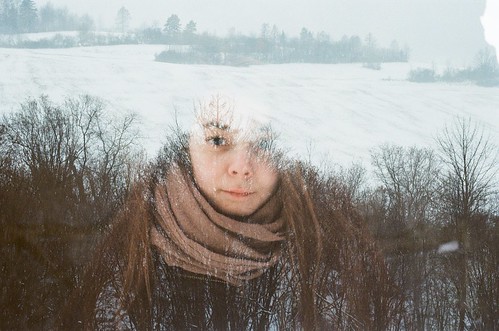Difference between revisions of "Multiple exposure"
(adding "double exposure" as the more familiar term; expanding to distinguish accidental from intentional; etc. ; removed dead link) |
m (Moved Glossary to the top of the page) |
||
| (7 intermediate revisions by one other user not shown) | |||
| Line 1: | Line 1: | ||
| − | {{ | + | {{glossary}} |
| − | + | {{Flickr_image | |
| + | |image_source= https://www.flickr.com/photos/184837301@N04/49428719398/in/pool-camerawiki/ | ||
| + | |image= https://live.staticflickr.com/65535/49428719398_f82dc5cbd8.jpg | ||
| + | |image_align= right | ||
| + | |image_text= In each area of the frame, the exposure<br>which was brighter there dominates | ||
| + | |image_by= Jan Cel | ||
| + | |image_rights= wp | ||
| + | }} | ||
| + | A standard feature of late-20th-century film cameras is that advancing unexposed film into position and recocking the shutter are combined into a single user action. But historically, many cameras—particularly cheaper or pre-1950s models—lacked any interlock between these two functions. Thus, nothing physically prevented the photographer from clicking the shutter repeatedly at different times and having those exposures overlap on a single frame of film. | ||
| + | |||
| + | Usually this was an unintended mistake, spoiling all of those separate shots; and so '''double-exposure prevention''' became a desired camera feature (as noted on older spec sheets and features lists). | ||
| + | |||
| + | Yet photographers have a rich tradition of trying out things that are “wrong.” Overlapping two or more exposures on one piece of film can be a creative technique, yielding humorous, surreal, or moody effects. | ||
| − | + | A few rudimentary cameras like the [[Holga]] and [[Diana]] always offered this option; and some enthusiast 35mm cameras include a function to disable film advance temporarily when recocking the shutter. Alternatively, this function can sometimes be approximated by operating the advance lever while keeping tension on the rewind knob and pressing in the rewind release button. And of course entire film rolls can be exposed, removed, reloaded, and shot a second time with varying unpredictable frame overlaps. | |
| − | + | The digital realm offers limitless options for layering and collaging multiple images and these might loosely be called “double exposures.” In contrast, in-camera film exposures only allow one chance to get everything right: framing, overall exposure, and the balance of light and dark areas. | |
| + | On film, additional exposures can only add light, not subtract it. The result is that bright areas on any of the exposures will swamp and wash out detail from the other(s); dark areas will let detail from the other exposure(s) to show through. | ||
| − | + | Trying to keep all this in one’s head and predict the outcome can be rather tricky, so it’s understandable that simple '''double exposures''' are far more popular than any higher-order multiples. | |
Latest revision as of 03:40, 23 March 2023

|
| In each area of the frame, the exposure which was brighter there dominates image by Jan Cel (Image rights) |
A standard feature of late-20th-century film cameras is that advancing unexposed film into position and recocking the shutter are combined into a single user action. But historically, many cameras—particularly cheaper or pre-1950s models—lacked any interlock between these two functions. Thus, nothing physically prevented the photographer from clicking the shutter repeatedly at different times and having those exposures overlap on a single frame of film.
Usually this was an unintended mistake, spoiling all of those separate shots; and so double-exposure prevention became a desired camera feature (as noted on older spec sheets and features lists).
Yet photographers have a rich tradition of trying out things that are “wrong.” Overlapping two or more exposures on one piece of film can be a creative technique, yielding humorous, surreal, or moody effects.
A few rudimentary cameras like the Holga and Diana always offered this option; and some enthusiast 35mm cameras include a function to disable film advance temporarily when recocking the shutter. Alternatively, this function can sometimes be approximated by operating the advance lever while keeping tension on the rewind knob and pressing in the rewind release button. And of course entire film rolls can be exposed, removed, reloaded, and shot a second time with varying unpredictable frame overlaps.
The digital realm offers limitless options for layering and collaging multiple images and these might loosely be called “double exposures.” In contrast, in-camera film exposures only allow one chance to get everything right: framing, overall exposure, and the balance of light and dark areas.
On film, additional exposures can only add light, not subtract it. The result is that bright areas on any of the exposures will swamp and wash out detail from the other(s); dark areas will let detail from the other exposure(s) to show through.
Trying to keep all this in one’s head and predict the outcome can be rather tricky, so it’s understandable that simple double exposures are far more popular than any higher-order multiples.